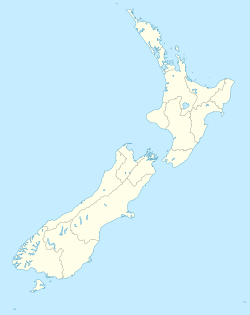Waiohau facts for kids
Quick facts for kids
Waiohau
Waiōhau
|
|
|---|---|
|
Town
|
|
| Country | New Zealand |
| Region | Bay of Plenty |
| Territorial authority | Whakatāne District |
| Ward | Rangitāiki |
Waiohau or Waiōhau is a quiet valley in the countryside of New Zealand's North Island. It is part of the Whakatāne District and the Bay of Plenty region. You can find it north of Murupara and south of Lake Matahina.
Contents
Exploring Waiōhau's Marae
The Waiōhau Marae is a special meeting place for the local Māori people. It sits near the eastern edge of Te Urewera National Park. This marae is important to the hapū (smaller groups or clans) of Ngāti Haka and Patuheuheu. These groups are part of the larger iwi (tribe) called Tūhoe. The marae has strong ties to Te Urewera, which is their maunga (mountain), and the awa (river) called Rangitaiki.
The Meeting House: Tama ki Hikurangi
The wharenui (meeting house) at Waiōhau Marae is named Tama ki Hikurangi. It was built a long time ago, between 1870 and 1909. This building is a central part of the marae, used for important gatherings and ceremonies.
New Dining Hall and Special Visitors
In March 2015, a new wharekai (dining hall) was opened at the marae. This is where people share meals together. Jacinda Ardern, who later became the Prime Minister of New Zealand, was supposed to open the building. However, she could not make it because of other duties. Instead, other members of Parliament from her party, Peeni Henare, Tāmati Coffey, and Kiritapu Allan, attended the opening. Jacinda Ardern promised to visit the marae later.
A Look Back: Waiohau's History
Education in Waiohau first began with Presbyterian missionaries. A school officially opened in the area in May 1918.
Remembering a Hero: Paora Rua
After World War II, a memorial was placed at the school. It honors Paora Rua, a soldier from the 28th Māori Battalion. He was killed in Crete on May 23, 1941, when he was 28 years old. The memorial includes a carved wooden soldier, a concrete pillar, a carved flag pole, and two marble plaques. One plaque says: "In memory of Paora Rua, killed in action, Crete, May 23rd 1941, aged 28." The other plaque reads: "By this memorial remember and honour Paora Rua, who died for his country."
Life in the 1950s
In 1956, about 200 members of the Patuheuheu hapū lived peacefully in Waiohau. There were also a few Pākehā (New Zealanders of European descent) living there. The community had four churches, including large Ringatū and Presbyterian churches. Many traditional arts and crafts, like whakairo (Māori carving), were still being taught from older to younger generations.
Honoring the Land Gift
During the school's jubilee celebration in April 1968, a bronze plaque was added to the war memorial. This plaque thanked those who originally gave the land for the school.
Community Action During the Pandemic
During the coronavirus pandemic in 2020, the Ngāti Manawa iwi took steps to limit access to the valley. This was done to help keep their community safe and healthy.
Learning in Waiohau
Te Kura Maori-a-Rohe o Waiohau is a school for both boys and girls. It is a state Māori language immersion area school. This means students learn mostly in the Māori language. As of February 2024, the school has 71 students.


